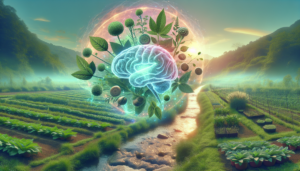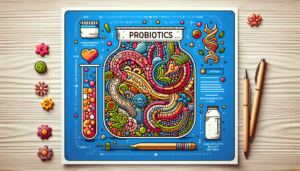The Intersection of Aesthetics and Mental Well-being
The Intersection of Aesthetics and Mental Well-being
Understanding Aesthetics
Definition of Aesthetics
Aesthetics is a branch of philosophy that deals with the nature of beauty, art, and taste. It involves the exploration of how humans perceive, interpret, and derive pleasure from the environment around them. Aesthetics spans various domains, including visual arts, music, literature, and architecture. The aesthetic experience can be both subjective and collective, influenced by cultural background, personal preferences, and societal norms.
The Role of Beauty in Life
Beauty is a vital component of aesthetics; it serves various functions in human life. It influences mood, evokes emotions, and fosters connections — both socially and personally. Various studies indicate that exposure to beautiful environments and artworks can lead to improved cognitive function, increased creativity, and enhanced emotional resilience.
The Importance of Mental Well-Being
Definition of Mental Well-Being
Mental well-being encompasses emotional, psychological, and social aspects of health. It affects how individuals think, feel, and act, ultimately influencing decision-making, coping with stress, and forming relationships. High mental well-being is characterized by positive self-acceptance, meaningful relationships, and the ability to contribute to society.
Factors Contributing to Mental Well-Being
Several factors play a pivotal role in shaping mental well-being, including:
- Biological Factors: Genetic predispositions can impact an individual’s mental health and coping mechanisms.
- Psychological Factors: Resilience, personality traits, and cognitive styles modify how individuals respond to stressors.
- Social Factors: Support systems and social networks significantly contribute to one’s mental health.
- Environmental Factors: The aesthetic quality of one’s surroundings can greatly influence mood and emotional well-being.
The Connection Between Aesthetics and Mental Well-Being
The Science of Beauty and Happiness
Research suggests a strong correlation between aesthetic experiences and mental well-being. Engaging with beauty—whether through nature, art, or architecture—can enhance happiness and reduce stress levels. Activities like visiting art galleries, attending concerts, or simply walking through aesthetically pleasing parks promote positive emotional states.
Nature’s Aesthetic Impact
Nature has an inherent aesthetic quality that profoundly impacts mental well-being. Studies indicate that exposure to natural environments fosters restorative qualities, increases feelings of tranquility, and reduces symptoms of anxiety and depression. Natural aesthetics, which encompass elements like green trees, flowing water, and vibrant flowers, encourage mindfulness and present-moment awareness.
Biophilia Hypothesis
The biophilia hypothesis, proposed by biologist Edward O. Wilson, suggests that humans possess an innate affinity for the natural world. This relationship with nature is thought to provide psychological benefits, including:
- Reduced Stress: Natural environments have been shown to lower cortisol levels, alleviating physical and mental stress.
- Enhanced Mood: Nature exposure stimulates the production of serotonin, a neurotransmitter associated with feelings of happiness.
- Improved Cognitive Function: Time spent in nature can enhance focus, creativity, and problem-solving skills.
Aesthetics in Art and Mental Health
Art Therapy
Art therapy is a therapeutic technique that encourages self-expression and exploration of emotions through creative mediums. It leverages aesthetic experiences to foster mental well-being. Various art forms—including painting, drawing, sculpture, and collage—can serve as therapeutic tools to:
- Express Emotions: Individuals can communicate feelings that may be challenging to articulate verbally.
- Exploration and Reflection: Creating art encourages introspection and allows for the exploration of personal narratives.
- Stress Reduction: Engaging in artistic activities can facilitate relaxation and serve as a form of escapism.
The Positive Psychological Effects of Art
Art not only serves as a medium for self-expression but also as a catalyst for community engagement and social interaction. Art initiatives, such as community murals or public art installations, can improve neighborhood aesthetics and foster social cohesion. This collective experience bolsters mental well-being by:
- Creating Connection: Involvement in communal art projects builds relationships and a sense of belonging.
- Enhancing Self-Esteem: Positive feedback from peers during artistic endeavors can reinforce self-worth.
- Promoting empowerment: The opportunity to create and showcase art contributes to personal agency.
Architecture, Design, and Mental Health
The Aesthetic of Spaces
Architectural design plays a crucial role in shaping environments that promote mental well-being. Spaces designed with aesthetics in mind can significantly affect behavior, mood, and overall well-being. Elements such as lighting, color, and spatial organization dramatically influence how individuals experience environments.
The Role of Natural Light
Natural light is an essential aspect of architectural aesthetics that correlates with mental health. Research indicates that exposure to natural light improves mood, enhances productivity, and regulates circadian rhythms. Buildings that maximize natural light through large windows and open spaces can create uplifting atmospheres conducive to mental well-being.
Color Psychology
Color plays a critical role in creating aesthetically pleasing environments. Different colors evoke various emotional responses; for instance:
- Blue: Associated with calmness and tranquility, promoting relaxation and reducing anxiety.
- Yellow: Evokes cheerfulness and energy, enhancing mood and optimism.
- Green: Represents nature and growth, inducing peace and well-being.
Leveraging color psychology in interior design and urban planning can significantly contribute to supportive environments for mental health.
Cultural Considerations in Aesthetics and Mental Well-Being
Cultural Influences on Aesthetic Appreciation
Aesthetic values vary across cultures; what is considered beautiful or meaningful in one culture may not hold the same significance in another. Understanding these cultural nuances is vital for promoting mental well-being through aesthetics.
The Role of Cultural Artifacts
Cultural artifacts, such as traditional crafts, music, and ceremonies, contribute to shared identity and belonging. Engaging with cultural aesthetics can serve as a protective factor for mental health, offering:
- Cultural Expression: Individuals can express their cultural identity through various artistic forms, fostering pride and connection.
- Cognitive Engagement: Participation in cultural activities stimulates the brain and encourages social interaction, promoting mental agility.
Conclusion: A Holistic Approach
The interplay between aesthetics and mental well-being highlights the importance of cultivating environments and experiences that prioritize beauty and emotional health. By integrating aesthetics into therapeutic practices, urban planning, and personal routines, individuals and communities can foster happier, more fulfilling lives. Understanding the myriad ways aesthetics contribute to mental well-being underscores its vital role in promoting a healthier society—one where beauty enhances every dimension of human experience.








